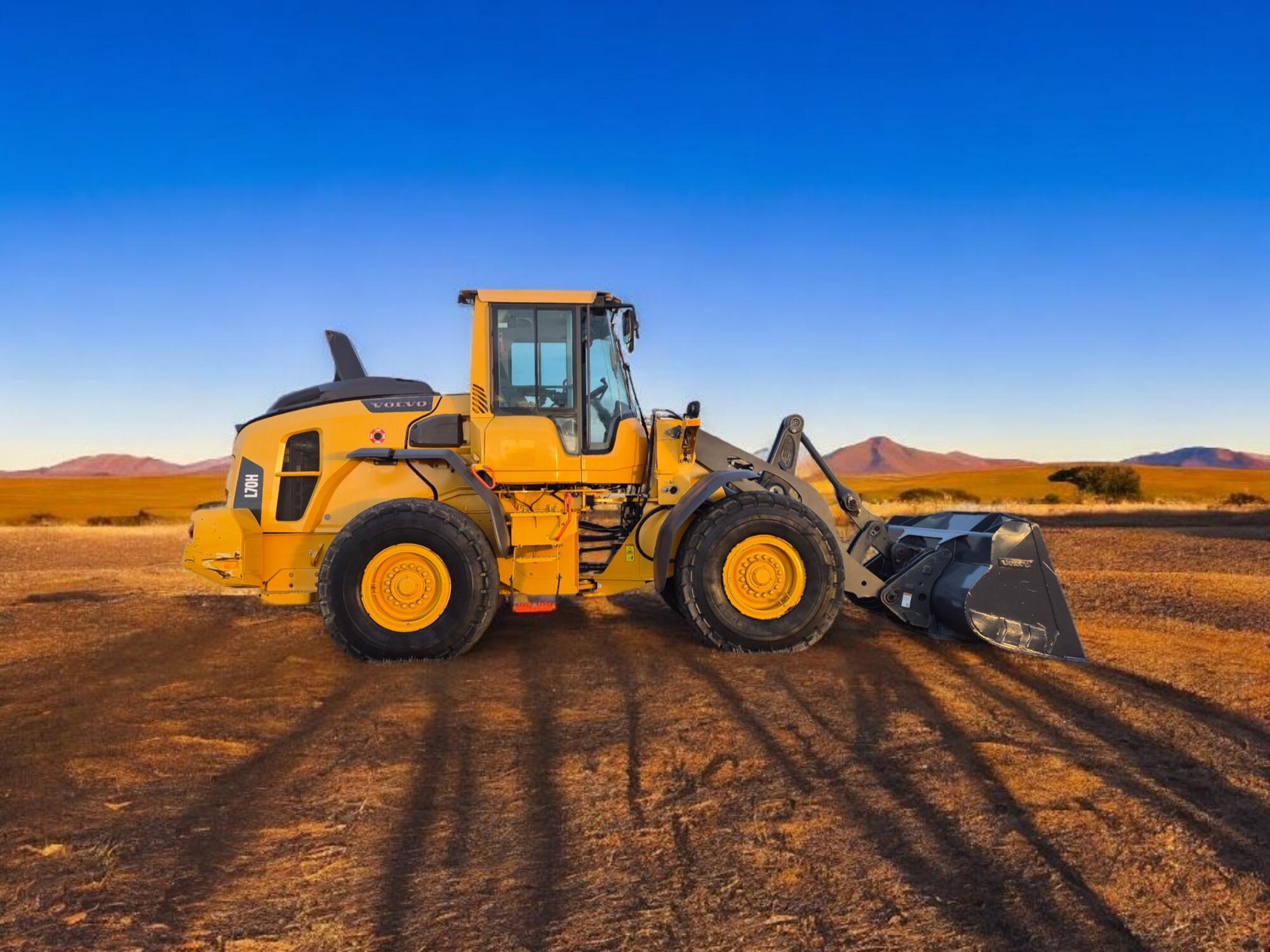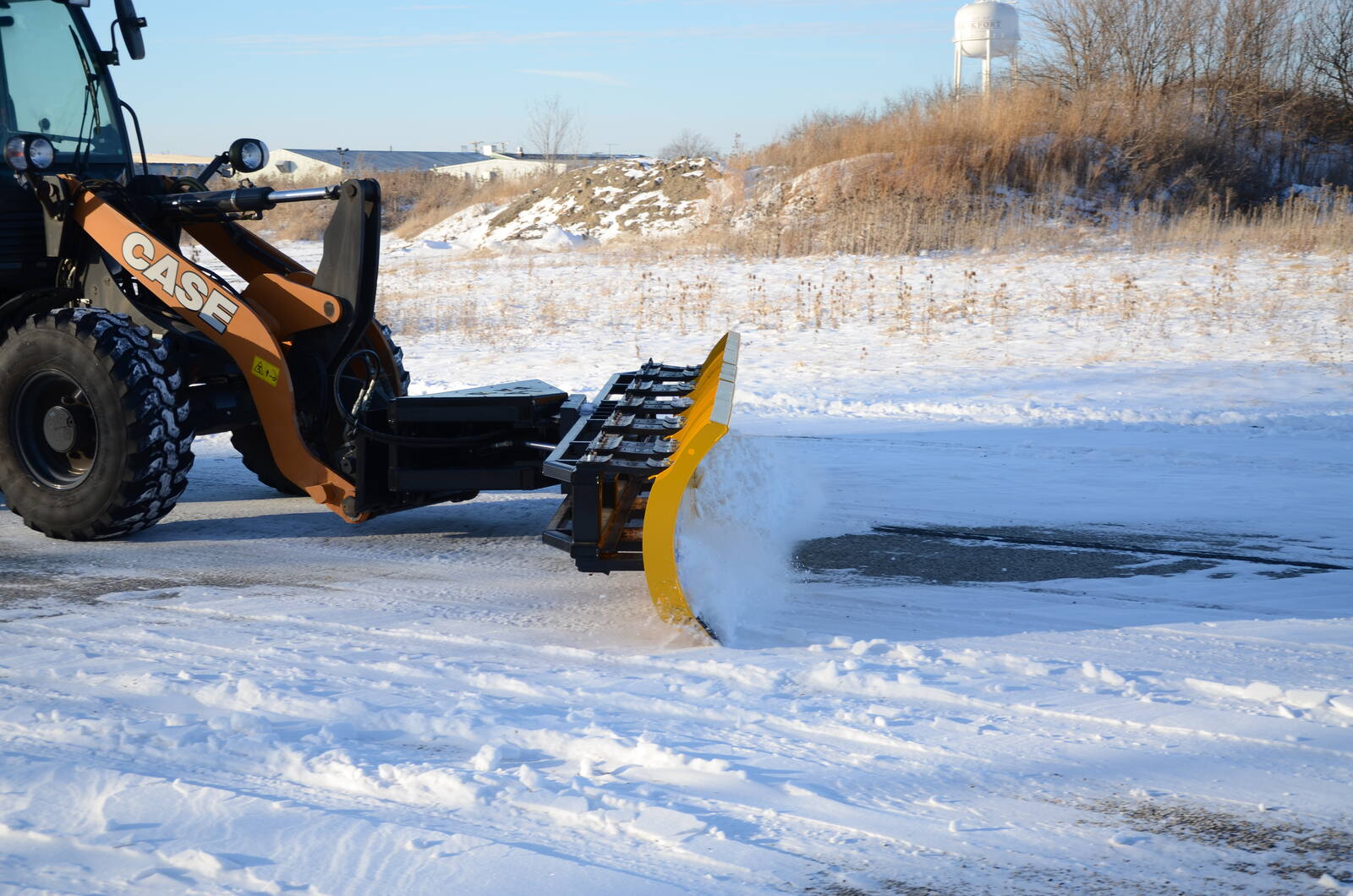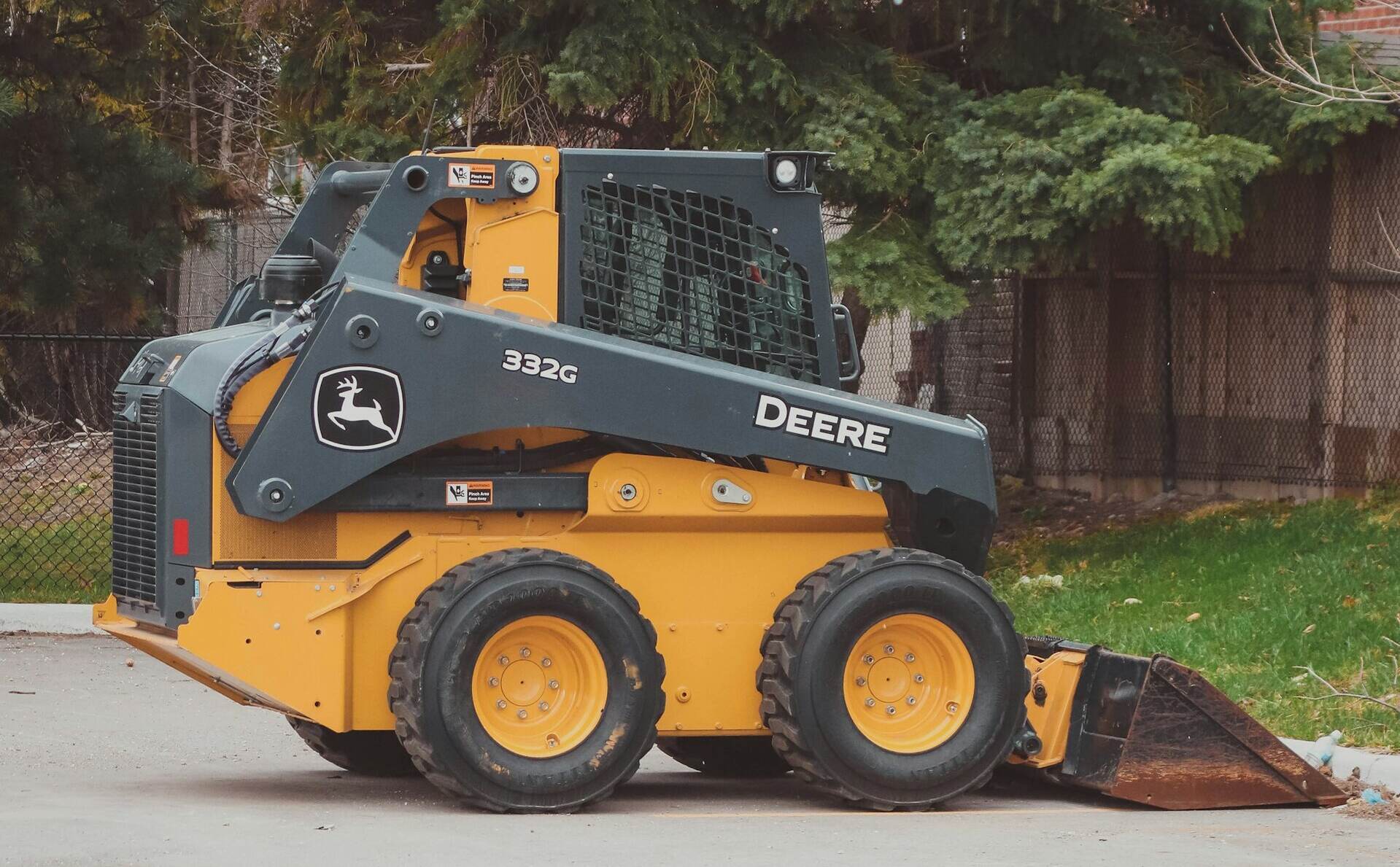In Western Canada, snow removal isn’t a “when we get to it” job, it’s a race against the clock. Every storm demands speed, precision, and profitability. The right plan and equipment mean your crew stays ahead of the weather. The wrong setup means wasted time, higher costs, and frustrated clients.
Inefficiency hits your bottom line in more ways than one:
- Extra labour hours from re-clearing the same areas.
- Increased fuel use from unnecessary passes.
- Excess salt costs from incomplete scraping.
- Equipment downtime that stalls the entire operation.
The reality is simple: in snow removal, every wasted minute costs money. Here, we lay out the most common challenges contractors face and the hidden inefficiencies that silently bleed profits, with proven solutions to keep your operation fast, clean, and profitable all winter long.
Table of Contents
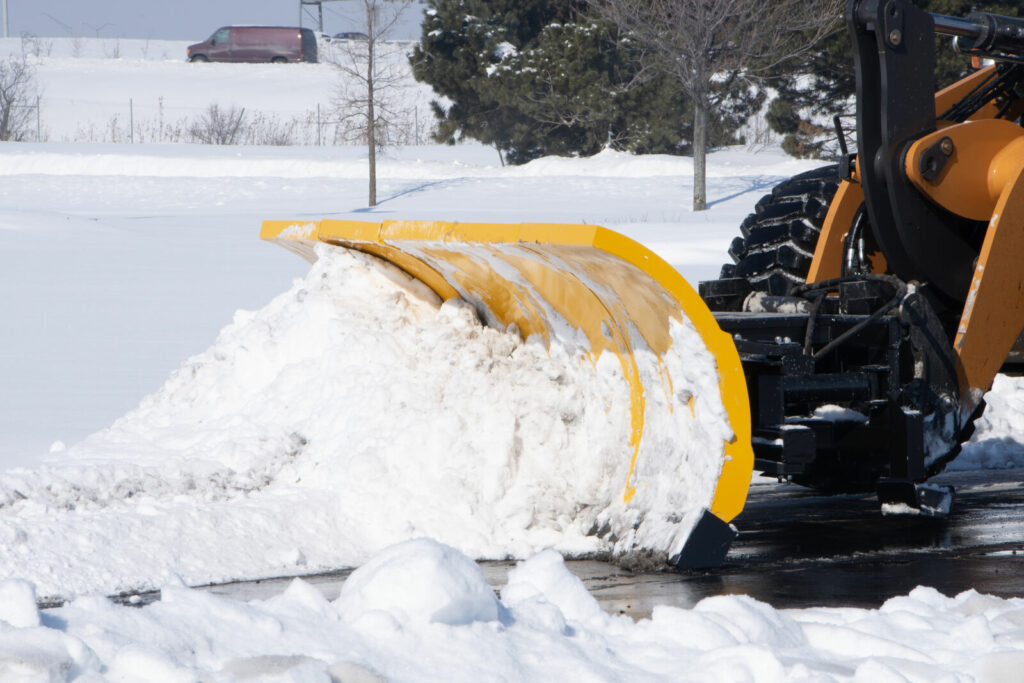
Core Challenges in Snow Removal Operations
Snow removal is a high-pressure, competitive business, especially when winter storms don’t follow the forecast. If you don’t get ahead of these challenges before the season starts, you’ll spend more time putting out fires than clearing snow.
Profitability Pressures
Snow removal margins are tight and unpredictable. One season might bring constant storms; the next could be dead quiet.
- Seasonal vs hourly contracts: Seasonal contracts give predictable revenue but can hurt if snowfall is heavy, and often clients often feel taken advantage of on mild winters. Hourly rates protect against big storms but can kill profits in slow years if there are no minimum charges to cover operational costs.
- Unpredictable snowfall: Without a pricing model that covers both light and heavy seasons, you’re gambling with your bottom line.
- Equipment leasing as a cost-control tool: Renting or leasing machines instead of buying can lower upfront costs, capital expenditure, keep fleet size flexible, and avoid owning underused equipment in slow winters.
- Being educated and prepared: Having a clear understanding of your operational costs and avg snowfall in your area can help you build a predictable pricing structure because, regardless if it snows, you need to be able to pay your employees and take care of bills.
- Consider having a floor and ceiling: This means having a minimum rate set you get paid in your contract (regardless of if it snows), and also a ceiling (especially if you have a seasonal contract) having a ceiling in your contract generally means if there are above average snowfalls you don’t lose money by the extra service needed, but are compensated for the additional work performed, its a smart move to protect your company and ensure profitability regardless of what the unpredictable weather brings.
Documentation & Liability
In snow removal, it’s not if you’ll face a dispute, it’s when.
- Proof of service: Every visit should be documented with dates, times, weather conditions, and before/after photos.
- Technology for tracking: Software or GPS tracking in your equipment can save you when a client claims you didn’t show up. The more evidence you have, the better your protection.
Pre-Season & Post-Season Preparation
Preparation is the cheapest insurance you can buy.
- Site inspections: Walk the property before snow season to note hazards, damage, and access points.
- Client communication: Set expectations now, where snow will be piled, how often you’ll clear, and what happens during back-to-back storms.
- Post-season review: Address any complaints, fix damage, and lock in repeat contracts before next winter.
Bulletproof Contracts
A vague contract is an open invitation for disputes and lost revenue.
- Clear scope of work: Define exactly what areas you will and will not clear.
- Liability clauses: Make sure you’re covered for slip-and-fall claims and property damage.
- Local considerations: In places like Calgary or other high-traffic areas, include clauses for city bylaws, haul-away services, or special client requirements.
Operator Training
Even the best equipment can’t make up for poor technique.
- Skill matters: A trained operator knows how to clear faster, avoid damaging surfaces, and reduce wear on the machine.
- Safety and efficiency: Good training lowers accident risk, minimizes downtime, and maximizes fuel efficiency.
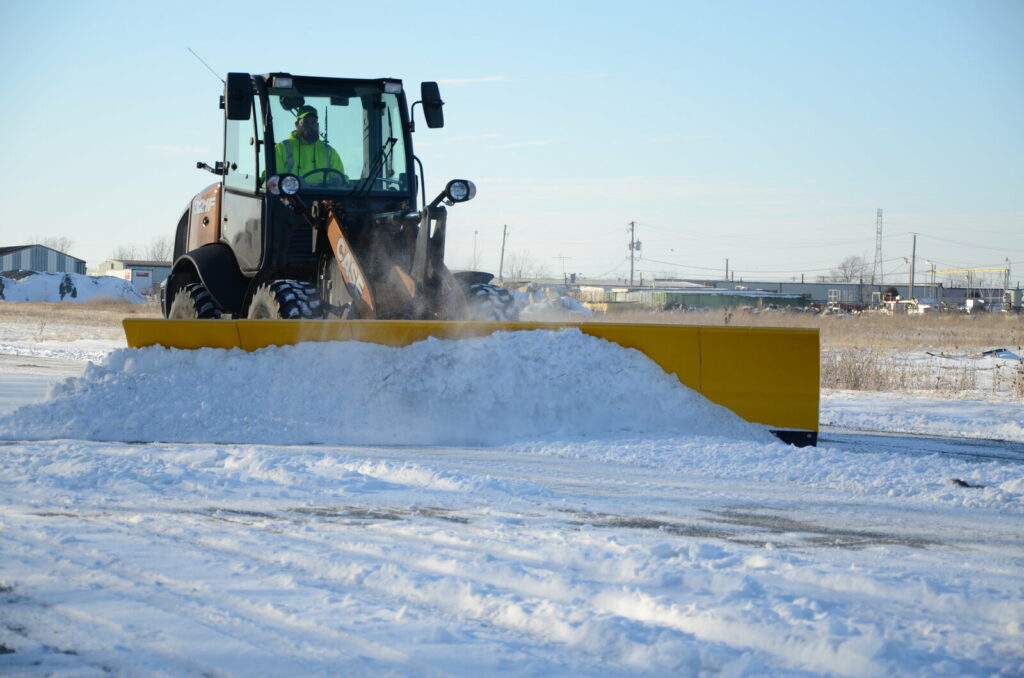
Inefficiencies That Cost Time and Money
Snow removal isn’t just about moving snow, it’s about doing it as fast and clean as possible. The wrong setup means more passes, more fuel, more salt, and more strain on your crew. These are the most common equipment-related inefficiencies that eat into your profits.
Poor Plow Design
Not all plows are created equal. Traditional fixed-blade plows often push snow to the side, leaving overflow piles that spill back into your cleared path. This means more laps and more fuel burned for the same result.
- One-pass efficiency: Sectional plows, like the Arctic Sectional Snow Plow, conform to the surface, reduce overflow, and scrape cleaner on the first pass.
Incomplete Scrape
If your attachment leaves a thin layer of snow or ice, you’re not done, you’re just setting up the next round of costs. That leftover layer needs more salt, more time, and another pass to make the site safe.
- Better edge design: Products like the Arctic Double Down Salt Bucket can reduce salt waste by targeting only where it’s needed after a clean scrape.
Size Mismatch
Running the wrong size attachment for the site is one of the fastest ways to kill efficiency.
- Too small: More passes, higher fuel consumption, more operator hours.
- Too big: Slower in tight spaces, higher chance of hitting curbs, light poles, or parked cars.
- Right-sizing tip: Use compact commercial snow plows for small, tight sites and larger loaders for open lots. For bigger jobs, ask yourself, What size wheel loader is best for snow removal? — the answer depends on your site footprint and access points.
Wrong Equipment for Site Conditions
Not every machine fits every job. Using the wrong equipment or attachment can slow you down and cause unnecessary inefficiencies.
- Tight spaces: Compact loaders and skid steers with maneuverable plows or pushers shine here.
- Industrial and wide-open lots: Wheel loaders with high-capacity snow pushers are the fastest way to move the snow to where you need it, making each pass count the most.
Poor Maintenance & Downtime
Nothing kills profitability like a breakdown mid-storm.
- Preventive maintenance: Checking hydraulic lines, wear parts, and conducting a general inspection of the equipment before the season starts prevents costly downtime.
- The cost of failure: Every hour a machine is down is an hour crews are idle and deadlines slip, which can cost you contracts, client trust and your profitability.
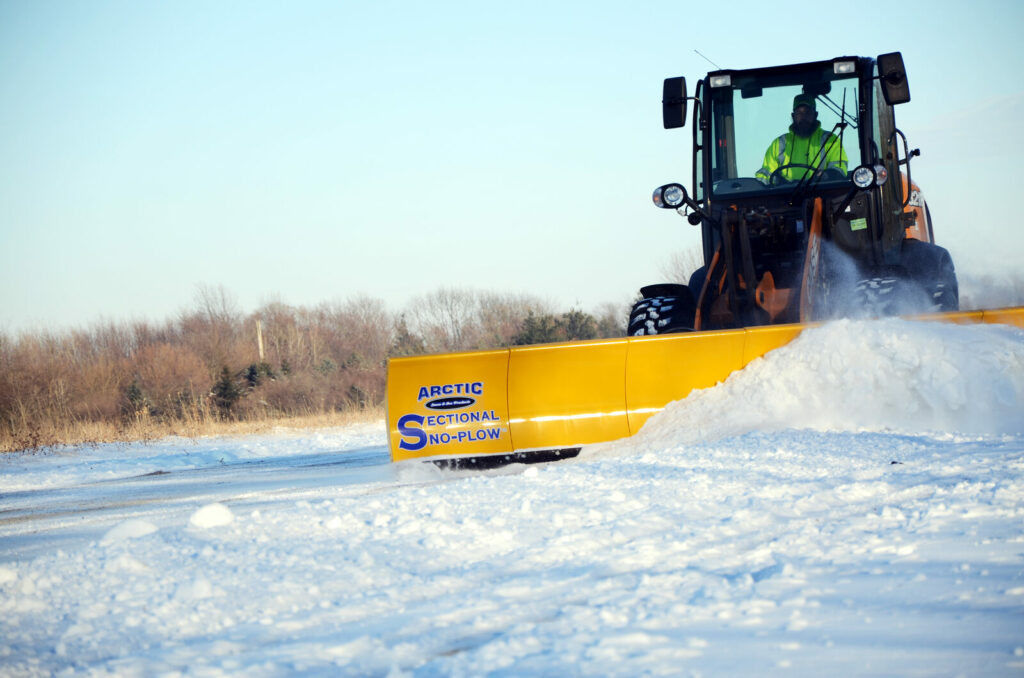
Solutions for Maximum Efficiency
The good news? Every inefficiency can be fixed, but it starts with knowing exactly what you need, matching your gear to the job, and working with a partner who delivers the right equipment at the right time and, more importantly, stands behind his equipment.
Match Equipment to the Job
Before winter hits, assess each property in your portfolio. Look at lot size, layout, obstructions, tolerance, and snow volume history, talk to someone in the industry who understands what equipment and attachments are required.
- Use the right attachment for the right site: Our 6 Key Considerations for Purchasing a Snow Attachment guide walks through how to choose the right size, features, and design for maximum performance.
- Buy vs rent: Commercial snow removal equipment for sale might make sense if you run year-round, but renting or leasing can cut costs, keep your fleet flexible, and give you access to the latest models without the long-term commitment.
Choose One-Pass Equipment
Every extra pass counts. Equipment designed for one-pass clearing is the fastest way to cut fuel, labour, and salt costs.
- Sectional plows: The Arctic Sectional Snow Plow clears right to the pavement the first time, regardless of slopes in the lot reducing ice and hard pack snow buildup and eliminating the need for cleanup passes.
- Advanced engineering: The Arctic Sectional Snow Pusher has has a perfectly designed moldboard angle that fills the attachment effectively before the snow spills out the sides and is designed to roll the snow forward, increasing the capacity of each push and making moving snow much easier than having to push the full weight of the snow like most other snow attachments.
- Targeted salt application: Tools like the Double Down Salt Bucket can be attached to the equipment already on site and spread salt under parked vehicles and distribute product in a path as wide as 60′.
Right-Size Your Fleet for Contracts
Your fleet size and specs should match your contract load, not just your budget.
- Avoid under-spec’ing: Too-small machines mean more hours spent on each site and less potential to take on more sites with less manpower and equipment.
- Avoid over-spec’ing: Oversized equipment can slow you down in tight sites, and may not be maneuverable enough to quickly and effectively clear your sites.
- Balance for location mix: If you have both tight lots and sprawling industrial yards, split your fleet between compact machines with versatile attachments and high-capacity loaders for the large sites. Often on the large sites, it makes sense to have several different-sized machines working together.
Partner with the Right Supplier
The best equipment is useless if it shows up late or in poor condition.
- On-time delivery: Delays kill profitability. Work with a supplier who treats your deadlines like their own.
- Usage-based pricing: At Plains Equipment Rentals, you tell us the hours you plan to use the machine, and we’ll calculate a rate based on that usage. If you go over, we adjust, no inflated, unpredictable charges.
- No hidden fees: Transparent quotes, no surprise charges, and no corporate runaround.
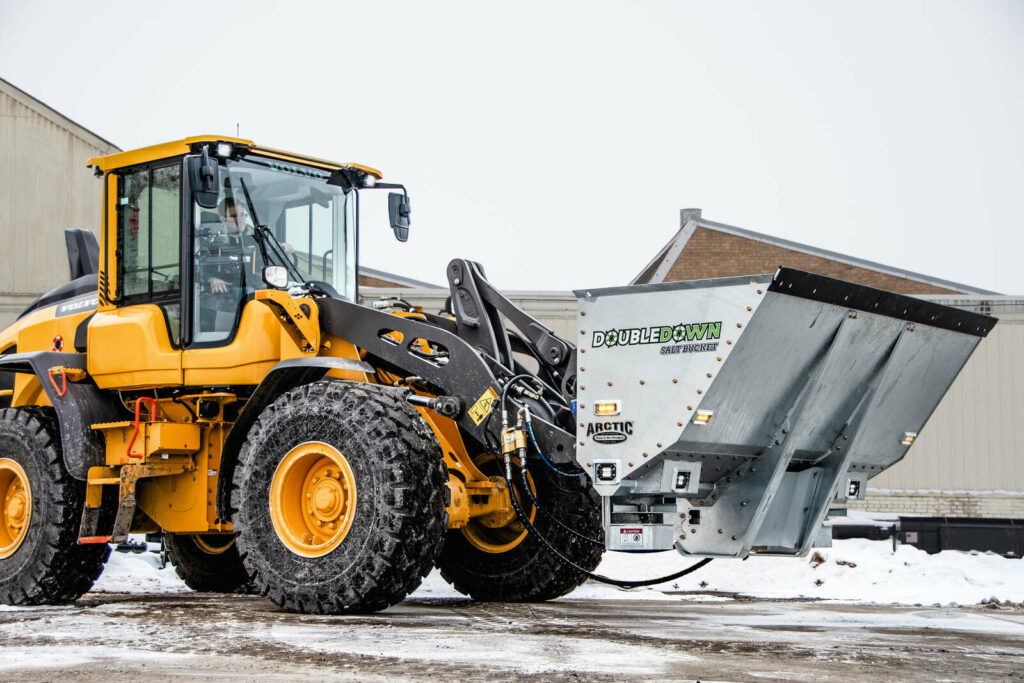
Quick Answers to Common Questions in Snow Removal
What is the most efficient way to plow snow?
The most efficient way is one-pass clearing with equipment that’s matched to the site. Sectional plows like the Arctic Sectional Snow Plow scrape clean the first time, preventing ice and snow buildup. Pairing the right plow with a trained operator keeps the job fast, clean, and profitable.
What size wheel loader is best for snow removal?
It depends on the site:
- Compact wheel loaders: Ideal for tight spaces,small commercial lots, and properties with lots of obstacles.
- Mid- to large-frame loaders: Best for industrial or commercial snow clearing, large parking lots, and open areas where speed and capacity matter most.
The right choice comes down to balancing manoeuvrability, capacity, and the average snow volume for the property.
Is snow removal hard work?
Yes, moving snow in freezing conditions is physically demanding, and the stress on equipment is constant. But with the right setup, quality, well-maintained equipment, you can reduce the workload: efficient attachments, mean fewer passes, clean scrapes, and reliable equipment means less scrambling when breakdowns happen.
What are the disadvantages of a wheel loader?
- Initial cost: Buying a wheel loader can be a big capital expense. Renting or leasing helps avoid tying up cash.
- Manoeuvrability in tight spaces: Wheel loaders excel in open areas but can be less efficient in small, obstacle-heavy sites.
Both challenges are easily solved with proper site matching and by supplementing with compact loaders or skid steers where needed.

Profitability + Efficiency = Winter Success
Success in snow removal is in the margins. Every extra pass, every minute of downtime, and every inefficient attachment eats into your profit, wrecks your company image and puts your contracts at risk. The contractors who win each winter are the ones who plan, know their costs ahead, match their equipment to the job, and work with a supplier who understands what their dealing with.
At Plains Equipment Rentals, we make sure you’ve got the right machines, delivered on time, and ready to work, with usage-based pricing and no hidden fees so you can budget with confidence.
Our machines have already been getting secured up for the upcoming season and we’re rapidly approaching the time where we’re out of equipment at the best pricing, if renting makes sense for your operation, secure your winter equipment now and make this your best season yet.


